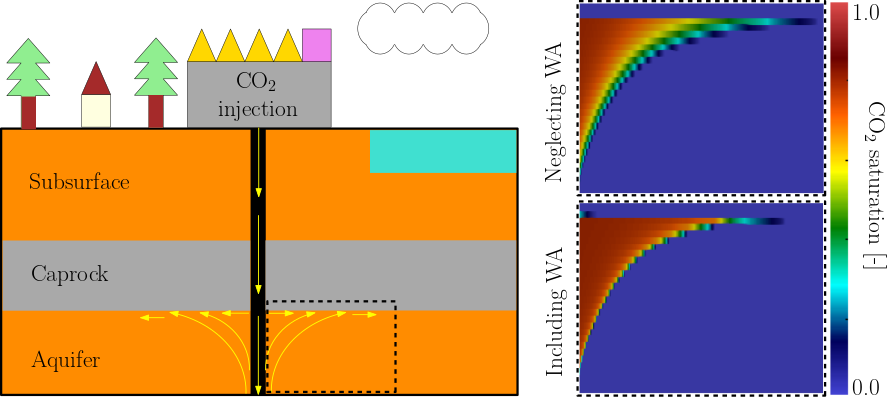Modeling approach
The main goal is to develop mathematical models for macroscale (size order of meters to kilometers) CO2 storage simulations that capture the impact of dynamic WA due to long-term CO2 exposure. This is done by quantifying rock/fluid properties from simulations/experiments at smaller scales (size order of millimeters to centimeters) and using mathematical techniques to incorporate them to the macroscale models. Details on the formal derivation of these models are available in the following two open-access journal papers: Kassa et al. (2020) and Kassa et al. (2021).
Field-scale simulations
The open porous media (OPM) initiative is a free-open-source software for reservoir modeling and simulation (opm-project.org). Researchers in the Computational Geosciences and Modelling group in NORCE contribute to the maintenance and development of the code. Then, two mathematical models in OPM to simulate CO2 storage has been extended to include WA effects. Details on the implementation and one-dimensional vertical and horizontal simulations are available in the journal paper Kassa et al. (2022). Recently, the work in Landa-Marbán et al. (2021) was presented in the GET2021 conference where results of two-dimensional simulations including and neglecting dynamic WA are discussed. The implementation is freely available from Github (https://github.com/daavid00/get2021).
Main learnings
- The change in wettability due to CO2 exposure over time can improve the storage efficiency in the geological formation.
- This dynamic WA can also reduce the caprock containment; luckily, the vertical migration of CO2 is a very slow process, posing little risk to CO2 containment.
PhD defense
Dr. Abay M. Kassa was the PhD student who extensively worked in this topic. He successfully defended his PhD thesis on 6 December 2021. The title of the thesis is: The role of wettability alteration in subsurface CO2storage: Modeling and numerical analysis.

